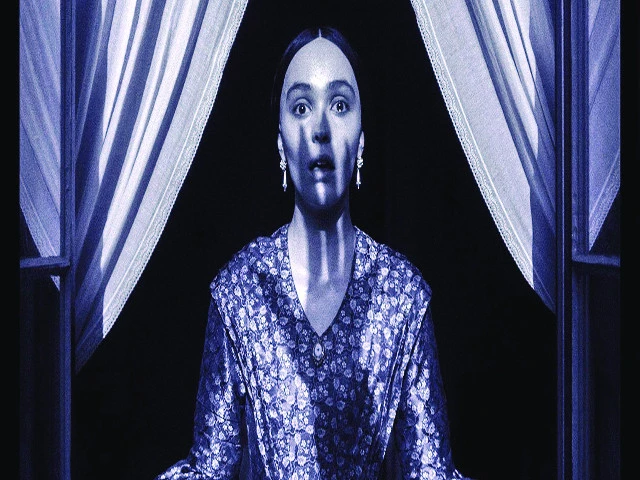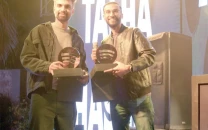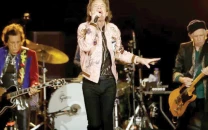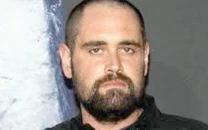Reclaiming the vampire
Robert Eggers breathes life into the century-old shadow of 'Nosferatu'

In Robert Eggers' Nosferatu, time folds in on itself. The film is not so much a remake of FW Murnau's 1922 Nosferatu: A Symphony of Horror as it is a séance, summoning the spectral remains of one of cinema's most influential monsters into the modern age. Eggers doesn't merely adapt; he exhumes and reconstructs, with a reverence for the past and an obsession with detail that feels almost pathological. And yet, in true Eggers fashion, his Nosferatu transcends homage – it is a singular work.
Eggers' fascination with folklore and historical verisimilitude is well-documented, not least in his own article for The Guardian, where he writes of the vampire mythos as something far older and more sinister than Bram Stoker's Dracula. Rooted in European superstition, vampires were never merely suave aristocrats in evening wearthey were bloated corpses in their burial shrouds, foul-smelling and pestilent. Eggers leans into this raw folkloric ugliness with Count Orlok, played with grotesque relish by Bill Skarsgård. With yellowed claws, mossy skin, and an unsettling, wet rasp of a voice, this Orlok feels like something ancient clawed up from the dirt, his presence more of a stain than a character.
A gloomy seduction
The film begins with Ellen Hutter (a riveting Lily-Rose Depp), whose haunted expressions seem etched into her pale, porcelain face. Eggers makes a crucial narrative shift by placing Ellen, not her husband Thomas (Nicholas Hoult), at the heart of the story. As Eggers notes in his Guardian piece, the folkloric vampire is as much about desire and disease as it is about death. Ellen is not merely Orlok's prey; she is his summoner. In one of the film's most startling opening sequences, she calls out into the void during a moment of desperation and the void answers.
From there, the familiar narrative unfolds. Thomas Hutter is dispatched by his employer Herr Knock (Simon McBurney, at his most unsettlingly feral) to Transylvania to finalise a property sale with the elusive Count Orlok. Ellen, left behind, grows increasingly plagued by nightmarish visions. But Eggers ensures this well-trodden path feels fresh, primarily through atmosphere and visual language. Jarin Blaschke, Eggers' longtime cinematographer, creates a universe smothered in oppressive shadows and flickering light, where sickness and fear are etched into the very architecture. You can practically smell the damp stone and mildew.
The folkloric vampire
Much like Murnau's original, Nosferatu feels less like a film and more like an invocationa summoning of something primal and terrifying. But where Murnau relied on Expressionist angularity and exaggerated shadows to invoke dread, Eggers opts for claustrophobic naturalism. The Carpathian landscapes are vast and eerily silent, and Orlok's castle feels like a decaying wound in the earth. As Eggers points out in his Guardian article, the folkloric vampire was inseparable from its landthe soil in which it was buried, the disease it spread across villages. Here, Count Orlok carries Transylvania's curse in every crooked finger and every guttural whisper.
The performances anchor this creeping dread. Depp delivers a performance that oscillates between fragility and steely resolve. Ellen is plagued not just by external forces but by internal onesher guilt, her desires, her dread of the inevitable. Hoult's Thomas, while earnest and well-meaning, often feels like a leaf caught in a gale. His naivety amplifies the horror of his situationparticularly in the infamous dinner scene with Orlok, where the count's piercing gaze reduces Thomas to trembling prey.
Eggers noted his desire to "make vampires scary again," and Skarsgård delivers. His Orlok is not suave or seductive but something wholly aliena predator that barely comprehends the humans around him. His stillness is just as unnerving as his sudden, skittering movements. And yet, there is a sadness in his eyesa deep, ancient sorrow that makes him as pitiable as he is terrifying.
Agony as art
Eggers also indulges in his penchant for religious imagery, layering the film with iconography that feels both sacred and defiled. Crosses appear as futile wards against Orlok's encroaching influence, and Ellen's suffering carries shades of martyrdom. In one of the film's most harrowing sequences, Ellenrestrained and writhing in the throes of her visionsis simultaneously saint and victim, her agony framed like a Renaissance painting.
But for all its grand thematic weight, Nosferatu never loses sight of the intimate, human tragedy at its core. Eggers ensures that the film's horror stems not just from Orlok's monstrousness but from the choices his presence forces upon the characters.
Eggers' Nosferatu is not without its flaws. The second act stumbles slightly under the weight of multiple subplots, particularly involving Friedrich and Anna Harding (Aaron Taylor-Johnson and Emma Corrin). Their roles feel underwritten, their motivations vague. Willem Dafoe, however, rescues much of this middle stretch with his portrayal of Albin Eberhart von Franz, a disgraced scholar obsessed with the occult. Dafoe, no stranger to the Nosferatu mythos (having played Max Schreck in Shadow of the Vampire), injects eccentric charm into the otherwise relentlessly bleak narrative.
In his Guardian article, Eggers spoke of his desire to create a vampire film that felt timeless, a bridge between folklore and modern fears. He has succeeded. This Nosferatu is not just a remake but a resurrectionan excavation of what made Murnau's silent film so deeply unsettling and an exploration of how those same fears still linger in our collective subconscious.


















COMMENTS
Comments are moderated and generally will be posted if they are on-topic and not abusive.
For more information, please see our Comments FAQ